
We are celebrating


We are celebrating
Last month, we had a blast enjoying time at V8 Supercars at the Taupo International Motorsport Park. Fifty Members experienced the thrilling races while staying cozy and dry in the corporate suite located at the pit lane entrance (thanks to the team at Stars Travel).

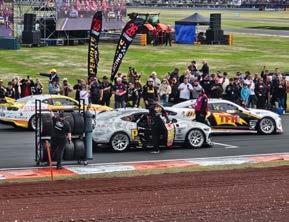






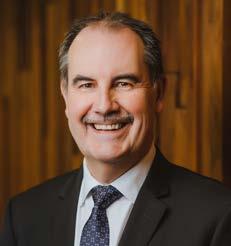
David Fraser Group CEO
2024 is 50 years since a group of Golden Fleece service station owners, a group of people with a common purpose, set up their own cooperative. They were very humble beginnings—on several occasions Capricorn almost didn’t make it—and as visionary as our founding people were, I’m not sure they would ever have expected Capricorn to become what it has. But I do think they would be immensely proud of the success Capricorn has enjoyed over the past half a century, and particularly during the last 20 to 30 years where we have built some scale and grown in leaps and bounds.
We think 50 Years Strong is a milestone worth marking, so throughout the first half of this new financial year, we’ll be celebrating with Members, Preferred Suppliers and the wider Capricorn community. Our Gala Dinners & Tradeshows this year will nod to this anniversary and I’m looking forward to seeing what stories and memorabilia Members share through our Memories Competition.
You might have heard by now that I’m retiring at the end of this year, after five and a half years as Group CEO and 18½ years with Capricorn. This celebration is a wonderful way to end my time with this incredible organisation and I hope to catch up with as many of you as possible at our events. It’s also personally very reassuring to know I’m leaving Capricorn in a strong position—one I believe the pioneers who founded our cooperative would be proud to see.
Capricorn’s strength, I believe, is that it has never lost sight of its vision and purpose. Our core mission is still providing value for Members— helping you build a better, stronger and more efficient business. Which means Capricorn must not stand still. If we want to be here for another 50 years (and we plan to be) we need to have one eye on tackling the challenges of the future, like the transition to EVs. The journey ahead may not be easy, but the strength and perseverance Capricorn has shown over the last 50 years shows we’ve got the grit and vision needed to continue to be an important partner to you and your business for many years to come.
So, we hope you will celebrate 50 Years Strong along with us.
David Fraser

Group CEO
4 A PROSPEROUS PAST AND A PROMISING FUTURE
Help us celebrate as Capricorn turns 50.
8 MUTUALLY BENEFICIAL
How Capricorn Mutual has helped us further our mission.
10 CUSTOMER SERVICE FUNDAMENTALS
They haven’t changed since 1974.
12 CAPRICORN CONVENTION 2024 WRAP UP
Find out what went down in the tropical paradise of Hawaii.
15 CLASSIC RIDE: VW GOLF
From boxy revolution to cultural icon.
20 2024 BMW i5 M60
Has electrification made the 5 series lose its identity?
24 CELEBRATION IS GOOD FOR BUSINESS
How a good time can boost your bottom line.

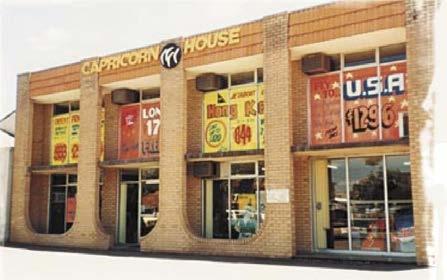


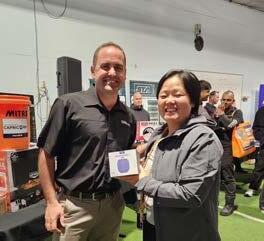

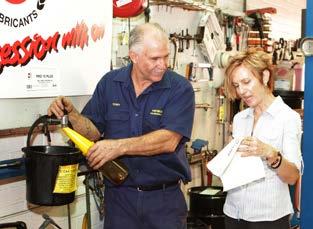



From 17 service station owners in 1974, to over 28,000 Members and over 2,000 Preferred Suppliers across Australia and New Zealand in 2024. Capricorn has a lot to celebrate, and even more to look forward to.
The year was 1974. The Holden Kingswood, the top selling car in Australia at the time, came with either an inline 6-cylinder or a V8 engine. The most advanced technology it featured was Holden’s Tri-Matic semi-automatic transmission.
Cars were simpler back then. It was a time before catalytic converters, electronic fuel injection, anti-lock braking and power steering. The technology was a world away from the adaptive cruise control, advance driver assistance systems and electric vehicles of today.
But that didn’t mean servicing was straightforward, nor that running a business in the automotive aftermarket was easy.
In fact, for a group of 17 Golden Fleece service station owners in Western Australia, the barriers to running successful, profitable businesses were very real.
The first big supplier to come on board was Lucas, who supplied batteries, filters, spark plugs and other common parts.
“Lucas were an exceptionally good supplier and through our service stations using them, they were able to take a great deal of business away from their own competitors,” Tulloch explained.
“The result was that this gradually produced other suppliers who wanted to do business with our group and that started a slow, but snowballing effect.”
Capricorn Society was finding its feet and independent workshops were starting to see the strength the cooperative offered. Ten years after we started, Capricorn had more than 300 Members. Over the next four decades, we would continue to grow and evolve, expanding across Australia and New Zealand, and into new areas, like business protection and financing. In 1987, annual turnover was around A$14 million. By 2004, Capricorn had 9,000 Members and an annual turnover of A$500 million. Today, Capricorn has over 28,000 Members who spent a total of A$3.4 billion with our Preferred Suppliers last financial year.

One of those barriers was the tight control the WA Spare Parts Association held over its members, which meant service stations were buying parts at very disadvantageous rates compared to others in the industry. Dissatisfied with the unfairness of the status quo, they decided to take matters into their own hands. In the early 1970s, they formed a joint buying group to pool their resources and increase their buying power.
“We operated on a fairly loose, but successful, system,” said Brian Tulloch, one of the original 12, in an interview in 2004. “It was not easy initially, and there was a great deal of resistance from suppliers.”
But the strategy worked, and it was soon clear there would be even greater advantages if the group were bigger and bolder. In December 1974, this informal group voted to create Capricorn Society.

So, while the cars of 2024 might be a lot more complicated than the cars of 1974, it’s clear independent workshops have decided Capricorn makes doing business easier.
The success of Capricorn was never guaranteed. But what we are today is a testament not just to the vision of the original 17 and the hard work of all those who have followed, but to the value Members like you continue to see in the power of working together. We believe Capricorn has survived and flourished because we have spent half a century listening to and meeting the needs of Members. Your success is our success. And we believe that’s something worth celebrating!
For the next six months, Capricorn will be celebrating the ways we’ve been a part of the successes of our Members, Preferred Suppliers and the wider automotive community over the last 50 years.
Keep an eye on our website, our Facebook and LinkedIn accounts, Ignition magazine and your email inbox for lots of fun and fascinating content, including a few trips down memory lane and reflections from some industry legends.
Share your Capricorn memories and win
We’re inviting you to contribute your memories, too!
If you have any memories or memorabilia from the past five decades of Capricorn, we’d love to see them. We want to hear how Capricorn has helped you build a stronger, better business. Submit your memories and you’ll be in the running to win a $1,000 voucher to throw a celebration of your own.
Entries will be used to celebrate the milestone, so make sure you keep an eye on our social media channels and 50 Years Strong website to see some blasts from the past!
So, if you’ve got a box in the back of a cupboard or a drawer in an old filing cabinet where some Capricorn memories might be lurking, now’s the time to dig them out and share them with us! You can use the QR code on this page to submit your entries and view the competition terms and conditions.



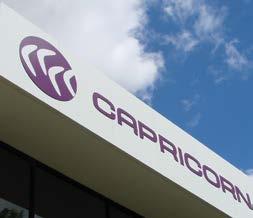
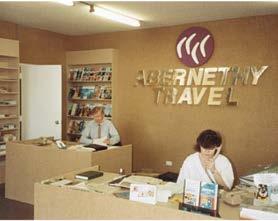







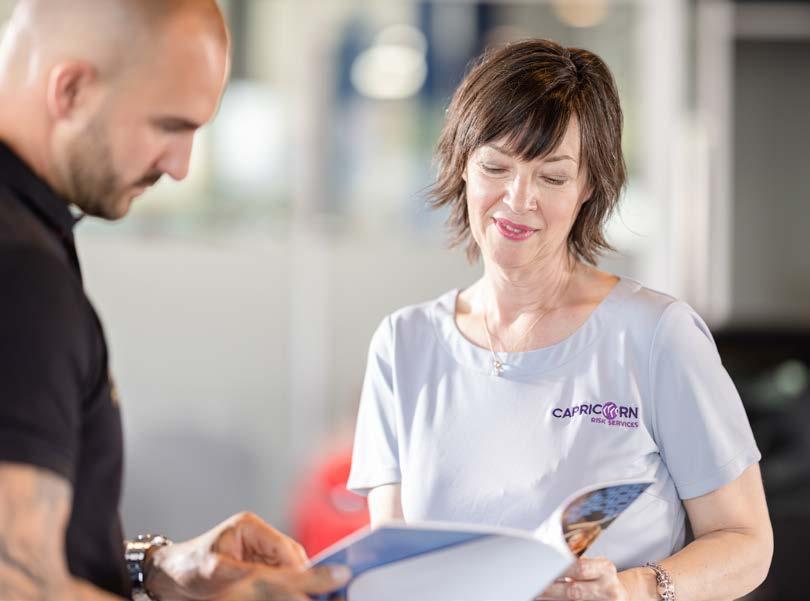



Like Capricorn’s establishment back in 1974, the creation of Capricorn Mutual Limited in 2003 was all about meeting a critical need for Members and their businesses.
At the time, small businesses in Australasia’s automotive aftermarket were finding it increasingly difficult and expensive to get insurance, following the collapse of HIH Insurance in 2001.
Capricorn decided to step in to help Members, establishing Capricorn Mutual as a discretionary mutual that could ensure that Capricorn Member’s assets and businesses were protected. That first year, about 1,000 Members signed up, and Capricorn Mutual wrote A$2.2 million in contributions. In 2023, Capricorn Mutual protected 12,000 Members and wrote almost $122 million in contributions.
“Over the last three years, we returned more than $10 million to Members, thanks to our strong results and excess capital.” he said.
The mutual difference is also apparent in the way Capricorn Mutual responds to incidents and to claims. Rod said that had never been clearer than when widespread flooding devastated communities across the Australian East Coast in 2022^.

In just two decades, Capricorn Mutual has become critical not just to Capricorn’s business but to the businesses—and the peace of mind—of our Members.
Capricorn Risk Chief Executive Rod Scanlon said the secret to success has been staying true to Capricorn Mutual’s core purpose: being a Mutual that specialises in motor trades and provides a protection product tailored to the auto industry.
“When our Members start or expand their businesses or purchase often very expensive equipment, we understand that these are huge moments in their lives, and by providing protection products like ours, we like to think we give them the confidence to make these decisions and still sleep easy at night,” he said. “Then, if things do go wrong and our Member needs to make a claim, we understand it’s critical that Members can get their business up and running as quickly as possible, as this is often their only source of income. We really tailor our claims processes around this.”
Rod said what sets Capricorn Mutual apart from its competitors is that, as a Mutual, we don’t have the same pressures to make huge margins like the listed insurance companies and we also have the ability to return excess funds back to Members through our Member rebate.

“We had a huge number of Members impacted in that event and we paid out in excess of $42 million in claims,” he said. “It was the biggest event we’ve had in the Mutual’s history, and looking back I could not be prouder of the way we responded. In very difficult conditions we worked with our builders to rebuild factories, service stations and we replaced stock and equipment to get our Members roller doors open to customers as soon as possible — and alongside this we paid many of our impacted Members for loss of earnings because they couldn’t open their workshops and get back to business if they had purchased the Business Interruption Protection.”
“One of the other big things we approved were emergency payments, where within 24 to 48 hours of the event we had cash out in our Members’ bank accounts. We understand that just because they’ve had a flood, it doesn’t mean that the bills stop.”
Rod said Capricorn Mutual’s Risk Account Managers—the team who are out on the road every day, meeting Members, were another real point of difference with the Mutual’s competitors.
“I am always blown away by how well our Risk Account Managers really understand our Members’ businesses, and how they work with the Member to tailor a protection product that meets the individual requests of the Member,” he said. “We understand that all of our Members’ businesses are different, so we don’t sell something off the shelf that is a one size fits all. We work with the Member to build a product until they are satisfied it meets their needs, so they’re not paying for unnecessary products and so they can feel comfortable they’ve got the right protection in place for their situation.”

They haven’t changed since 1974.
At the British Museum in London there’s a clay tablet dated to 1750 BC which is engraved with the oldest customer complaint on record. The complainant, Nanni, reckoned a merchant had sold him some substandard copper ingots.
Customer service is, it appears, as old as trade itself. Customers these days might be more likely to send an email, pick up the phone or leave a bad review online than roll out a clay tablet, but the basic principle holds—customers expect good service.
Perth-based customer service expert Chris Smoje said the essence of what constitutes customer service had not changed much in the half century since Capricorn was founded, even if technology had changed the way customer service is delivered. Regardless of the technology used, what every customer wants is “old-fashioned service.”
“When people talk about ‘old-fashioned service’, it’s usually something they fondly remember with a smile,” Chris said. “Having your engine checked and windscreen cleaned while your car is being refuelled is almost completely gone, yet people fondly remember the days when it happened.”
Chris said while the essence of service had stayed the same, the pace of business had evolved, creating the perception that service had fallen behind. Technology should make service easier, but having more customers and more technology has created more customers needing more support and a greater chance of something failing.
“Therefore, many of the service interactions that are taking place are negative because they are focused on trouble shooting or problem solving, which gives the illusion that customers are complaining more,” Chris said.
So, while technology can technically provide service, it’s the human element that ensures you stay true to the fundamentals of “old-fashioned service”, according to Chris.
What are those fundamentals? Here’s Chris’s advice:
Customers may have a deep connection to their vehicle if they rely on it daily. They want problems fixed quickly. Meet their service needs with a sense of urgency.
While you have the essential expertise the customer needs, being able to relay information in an understandable manner is equally crucial.
Vehicles are often people’s second-largest purchase after their home, so leaving them in your care requires a high level of trust. Show why you deserve that trust.
Even the term “aftermarket” itself signifies the long-term connection between customers and their service providers. Focus on building lasting relationships. What will keep the customer coming back?
What is good for the car might not always be good for the customer. For example, the ideal repair might not be within their budget. Show genuine care for both customer and vehicle and offer solutions that cater to their unique needs and circumstances.
Embracing these fundamentals will see your customers as happy today (and in 50 years’ time) as they might have been with the “old-fashioned service” of 1974. At the very least, they should keep your inbox free of clay tablets!




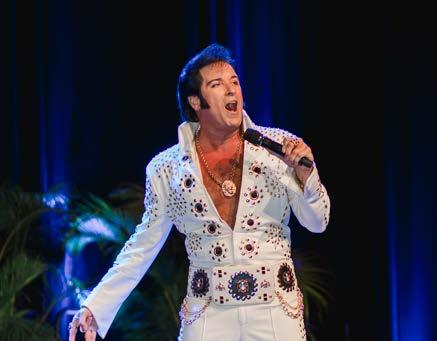

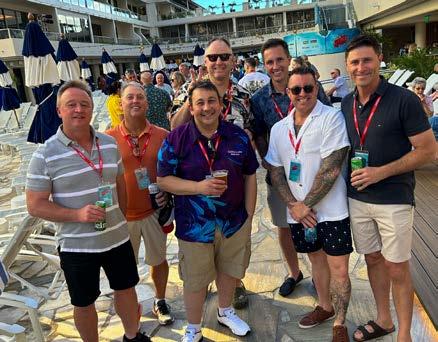







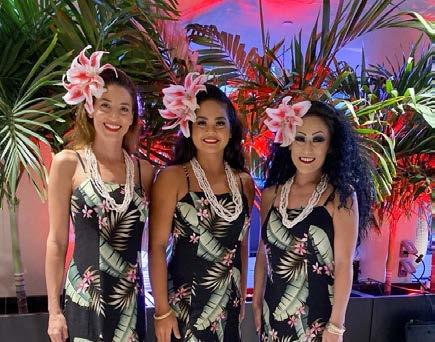

Now that the jet lag has worn off, it is time to take a look back at the spectacular Capricorn Convention 2024 in Hawaii.
Our Group CEO, David Fraser, shared his thoughts: “I’m thrilled to report that Capricorn Convention 2024 was a great success! Having everyone come together in Hawaii for a week of fun, networking, and learning as a community was remarkable."
The presence of over 600 Members, Preferred Suppliers and Capricorn team members helped make this year’s Convention a truly memorable occasion.
We’d like to thank our sponsors for their generous support and assistance in hosting various social and networking events. Castrol, Century Batteries, Burson Auto Parts, Pedders, Repco, Solera Autodata, Woolworths at Work, Workshop Software and Capricorn Mutual all made invaluable contributions in this regard.
Brad Gannon, Capricorn CEO Automotive, had a few words of appreciation for the team that organised everything, “Huge thanks to the Capricorn team for coordinating such a seamless and memorable experience. Their dedication and hard work ensured that everything ran smoothly, allowing attendees to immerse themselves fully in all the activities, events and discussions.”
As we bid farewell to Capricorn Convention 2024, we’re excited to announce that plans are already underway for the next Convention in 2026!
Thank you once again to everyone who made this event possible and, until we meet again, aloha!







The year is 1974. The Watergate scandal sees US President Richard Nixon resign. In Africa, Muhammad Ali fights George Foreman in the famous Rumble in the Jungle. In China, a new wonder of the world, the Terracotta Army, is discovered. In Western Australia, a meeting of the service station owners who will go on to create Capricorn Society is held. And in Wolfsburg, West Germany, the first Volkswagen (VW) Golf rolls off the production line.
Which among these is the greatest cultural touchstone? Let’s make the case for the humble VW Golf.
The Mark 1 Golf was a boxy, front-engined, front-wheel drive replacement for the beloved VW Beetle, which was rear-engined and rear-wheel drive. They were big tyres to fill. The Beetle sold 21.5 million units over 65 years and has captured the hearts and imaginations of people the world over. It was the world’s most successful car at the time.
“As it turned out,” Volkswagen explained in a 2019 retrospective of the Golf, “the modern and safe drive system concept, great flexibility offered by a tailgate and folding rear seat backrest and, of course, its design were so convincing that by October 1976, it was already time to celebrate the millionth Golf produced.”
That’s one million Golfs produced in just 730 days. Almost seven million first generation Golfs—including all derivatives and the (at the time) structurally identical Jetta—were sold in total. That was only the beginning.
Eight generations on and across 50 years, 37 million units of the VW Golf have now been sold—that’s about one Golf sold every 41 seconds. The Mark 6 was World Car of the Year in 2009 and the Mark 7 achieved the same honour in 2013. It was the European Car of the Year in 1992 and 2013. The Mark 4 was the best-selling car in Europe in 2001.
Not only is it VW’s best-selling car ever, the Mark 1 Golf GTI is often credited with starting the “hot hatch” trend for high-performance hatchbacks, which endures in Europe and the UK. The GTI was a fuel-injected 1.6 litre buzz box capable of a terrifying 177 kmh. The standard Mark 1, with its 1.1 litre engine, could travel at a more sedate 145 kmh and go from zero to 100 kmh in 17 seconds. (Power: 80 kW at 6,100 rpm; Torque: 770 Nm at 3,000 rpm.) Famously, Lady Diana Spencer, the soon-to-be Princess of Wales, owned one in light blue.
In 1983, VW launched the Mark 2. It was a bit wider and a bit longer, a bit bigger, a bit heavier and a bit more powerful (with 1.3, 1.6 and 1.8 litre models). It also made it a bit more expensive. It would go on to become a bestseller—though not in South Africa, where, uniquely, they kept producing a slightly updated version of the Mark 1 instead, to keep the cost of the vehicle affordable. Called the “Citi Golf”, it really was the people’s car, “the volk’s wagen” of South Africa. Production stopped in 2009, and that was only because its eight-valve engine fell foul of new emissions laws.
Volkswagen didn’t rush into replacing the Beetle. They first approached Italian designer Giorgetto Giugiaro in the autumn of 1969, charging him with creating the Beetle’s successor. Although they were initially reluctant to hire him, VW had unknowingly just bagged themselves one of the greatest car designers the world had ever known. Giugiaro went on to design 200 models of vehicles totalling sales of more than 61 million units. He was voted “car designer of the century” in 1999. He designed the DeLorean (of Back to the Future fame), the Lotus Esprit and the Fiat Panda.
What was Giugiaro’s genius? Perhaps it was this insight, told to Esquire magazine in 2019.
“Your car is a status symbol to show who you are, what you think and what you would like to be,” he said.
“Humans don’t change: a man will always want to show himself, he wants to spend his money, and show what he prefers by his choice of car. A car can do that.”
How did he reflect on the enduring popularity of perhaps his most successful design—the design that launched his career—the VW Golf?
“Yes, quite a success in the end,” he said. It was a delicious understatement. Like many of the other great occurrences of 1974, the VW Golf has become a cultural icon. Like Capricorn, the Golf has grown and evolved over time. Like the terracotta warriors, its popularity has only increased.
The year is 2024 and like Watergate and the Rumble in the Jungle, the VW Golf’s influence—and its cultural relevance—continues long after the context of its moment.
Images by Volkswagen












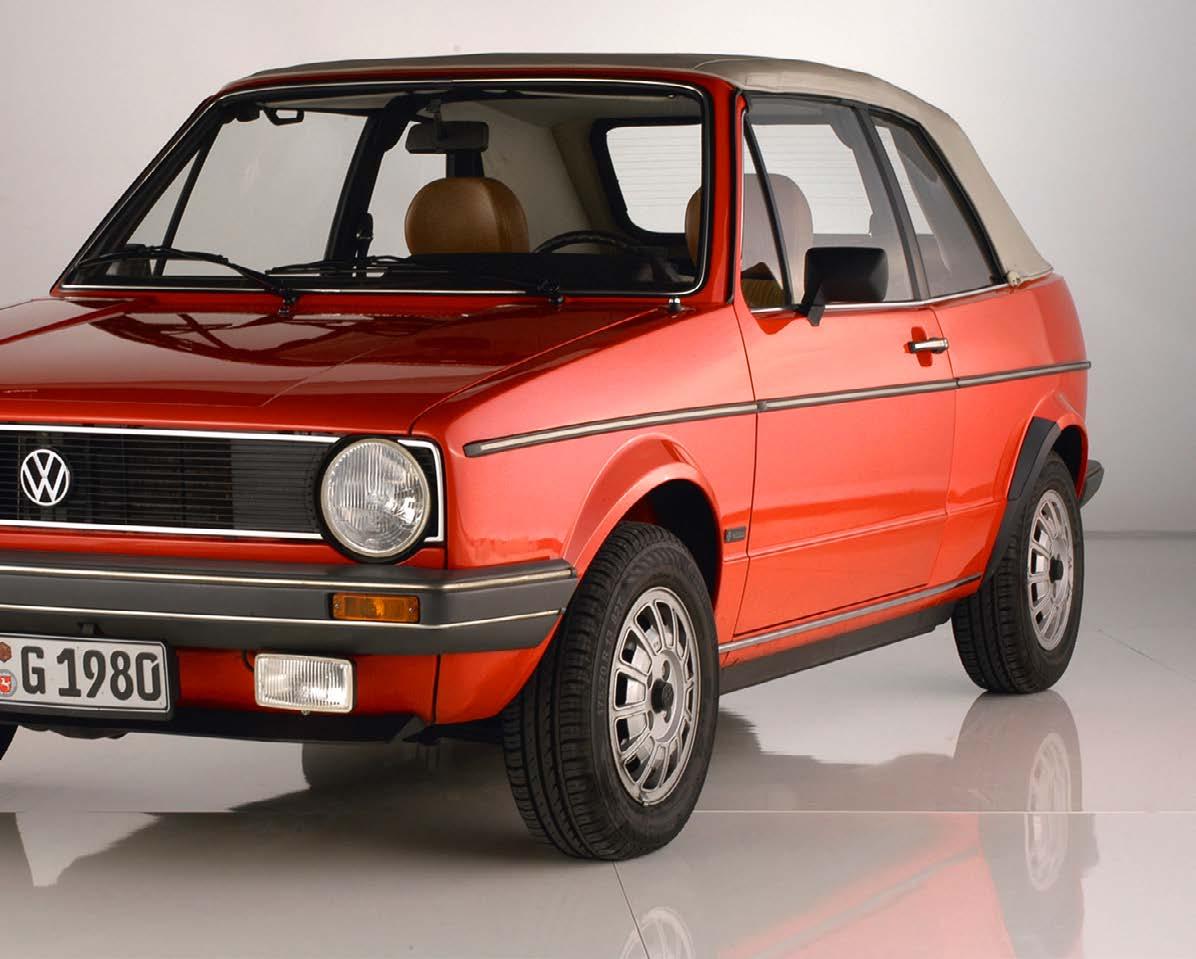







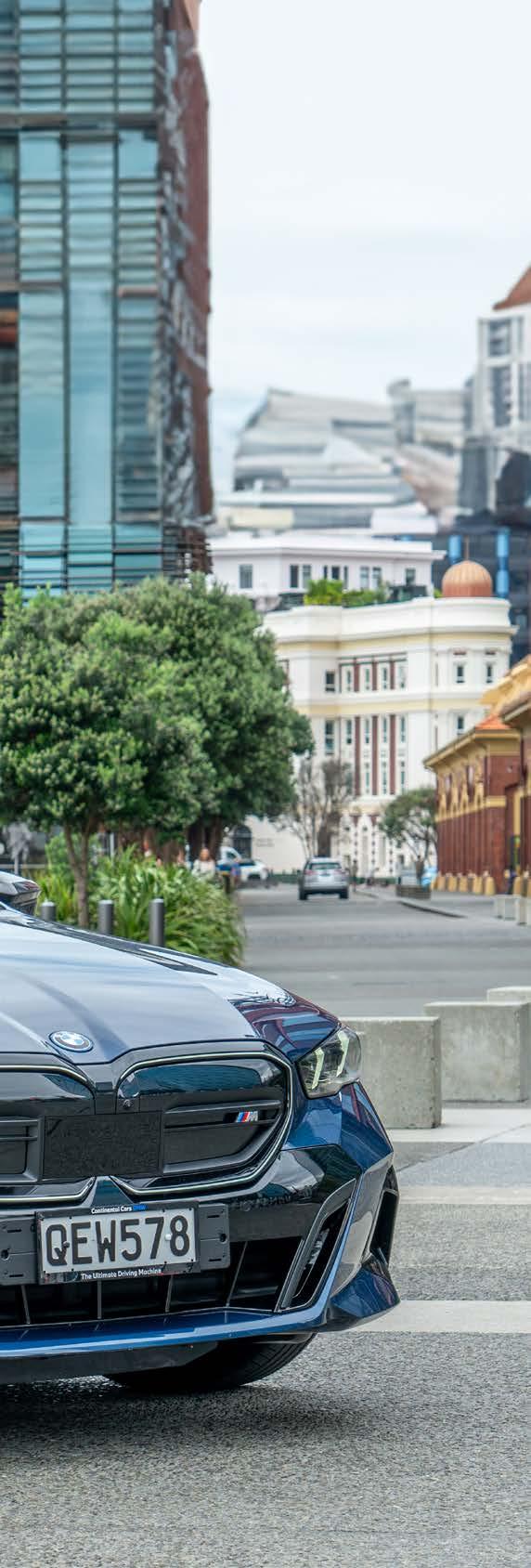
Since the launch of the 5 series in 1972, the mid-size executive saloon has become a bit of an institution for BMW. Even today, in a world dominated by SUV sales, the 5 series remains BMW’s second-best-selling model ever.
In 2024, the BMW 5 series has entered into its eighth generation and gained an electrified variant — the BMW i5. The spec sheet of the i5 M60 appears promising, with plentiful performance, tons of tech and a lavish interior.
So, does combining the 5 series recipe with an electrified powertrain create the ultimate driving machine? Or does electrification make the 5 series lose its identity?
Performance
Some of the best tech in the industry
Interior quality
Build quality
Brilliant Bowers & Wilkins stereo
Ride quality not quite of the standard we’d expect Price
Polarising nose Experience modes, instead of Drive modes

What’s in the 2024 BMW i5 M60 range?
The BMW i5 M60 is the only fully electric 5 series offered in New Zealand. Overseas, the BMW i5 has different specs, but New Zealand only gets the M60 – which also happens to be the highest-spec i5 of them all.
Although we’ve only got one spec to choose from, New Zealand still gets to choose whether to have their i5 M60 as a saloon (starting price $201,600) or a touring/ station wagon (starting price $206,600).
There’s a handful of new BMWs in their lineup which could be described as “aesthetically challenged”. By comparison, the i5 sits on the more conservative end of the design spectrum. The nose and front apron are a little messy, but the rest is quite pleasing to the eye. In particular, the rear three-quarters is sharp and muscular, reinforced by the block-style rear LED lights and lower diffuser. It also conceals its mass relatively well, because the i5 is virtually the same size as a previous-gen 7 series.
What’s the interior like in the
Climbing in, you’re greeted with a cabin laden with high-quality materials and a Germanic fit and finish. In the front, you’re perched in an ultra-plush seat, upholstered with multiple-tone leathers and a seemingly infinite number of adjustable settings. Affixed to the dash is a massive, curved LED display, combining a 14.9’’ infotainment cluster and a 12.3’’ instrument cluster.
Despite the darker interior hues, the cabin doesn’t feel cramped inside. The large panoramic sunroof also introduces plenty of light. The centre console is BMW’s latest generation design, which uses glass and hollow haptic controls. Overall, the i5’s cabin delivers a proper luxury car experience. The infotainment system is fast, responsive and has a good (but not great) tile-based interface. This system is paired with a 17-speaker, 655-watt Bowers and Wilkins audio system, which is superb — easily one of the best sound systems I’ve experienced in any vehicle.
Even though all the technology is mostly experienced from the front seats, the i5 still delivers a pleasant experience for those in the rear. There’s plenty of space to spread out, along with plenty of amenities so you needn’t feel like you’re missing out. The boot is also a decent volume at 490 litres with the rear seats in place, meaning there’s plenty of room for suitcases, golf bags, etc.
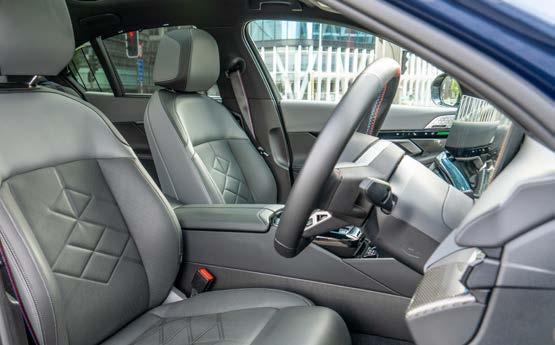

For starters, it’s a blimmin’ rocket ship! Between two electric motors, the i5 M60 outputs 442 kW of power and 820 Nm of torque. These performance figures will shift the i5’s 2,380 kg frame from 0-100 kmh in a mighty quick 3.8 seconds, pushing on to a top speed of 231 kmh.
BMW claims a WLTP driving range of between 445–516 km from a full charge, with an energy consumption rate of between 19.6–20.4 kWh per 100 km, and we weren’t too far from these figures during our test. So, the i5 M60 is quick, technical, and luxurious — hardly surprising, really. But how does it drive? Surely that M60 badge has got to mean something?



The BMW i5 M60 is many things. It’s massive, high-tech, luxurious, uber-expensive and an absolute rocket ship of an executive saloon.

While the i5 M60 doesn’t have the same athleticism as an M5, overall its capabilities are impressive, particularly for its size and weight. Otherwise, the whole handling experience feels fairly inert. The chassis doesn’t feel overly enthusiastic about fast corners (on account of its weight), and the steering, while direct, feels pretty dead feedback-wise. For these reasons, the i5 M60 is much happier cruising at 70% capacity, as opposed to testing the edge of its abilities.
As a GT, out on the open road, the i5 M60 does a mostly excellent job. Wafts of power, decent range, a quiet and comfortable interior, along with an absolutely banging sound system — what’s not to like? Well, the ride quality is generally good, but not quite as great as I was anticipating and can get a bit bumpy over poorer-quality surfaces.
The adaptive cruise control is excellent and the lane keep assistance is also very good. Like other modern BMWs, the i5 features an array of cameras and BMW’s parking assistance technology.
It’s a technically brilliant vehicle, with some of the best interior technology available on the market. Beyond the technology, the i5 M60 is an excellent open-road tourer. It’s quiet, the interior is comfortable and well-built, the Bowers & Wilkins stereo is superb, and it goes like the clappers when you put your foot down.
Of course, even the technically brilliant have their flaws. In particular, the i5 M60’s ride quality could be better, as could its energy efficiency. Although, the bigger flaw is its price. Sure, the i5 M60 is ‘cheap’ amongst rivals, but the whole segment is rather expensive for what it’s offering. If you have the cash to burn, the i5 M60 makes for an excellent luxury car. As a sports saloon, though? Perhaps not.
by Geoff Mutton

As Capricorn starts celebrating its 50 Years Strong, it got us thinking about the valuable role that celebrations play in running a truly successful business.
Before talking about the value of a celebration to your auto workshop, it may help if we examine the origins of this age-old ritual. It’s a lot more than a round of drinks and a speech by the boss. In fact, the ritual of celebration may be one of the most important ingredients for our success as human beings. It’s all about value, and as we know, value is the very stuff of life.
We call it a ritual because a ritual is any activity that is meant to shift the state of mind or state of relationship for those who participate in it. It follows that a celebration is a ritual – a ritual about value, and its sole purpose is to acknowledge or appreciate the impact and meaning of something or someone valuable to our lives.
Now apply this ritual to your workshop where the thing of value is a worthwhile and meaningful job.
Unfortunately, workshops can be hectic places, where it is all too easy to overlook a job well done, or a milestone that has been reached. For an industry struggling with staff shortages, this is a missed opportunity, because celebrating wins and milestones is important for fostering a positive work culture and keeping or finding staff.
Recognising and acknowledging achievements not only boosts morale but also creates a sense of pride and accomplishment. It will reinforce the belief that hard work and dedication
pay off and will boost individual and team confidence to tackle more significant challenges in the future.
The value of celebration:
Motivation – it’s human nature to strive for recognition, so when employees are acknowledged for their achievements, they automatically become motivated to keep doing good work. Celebrating work achievements can also have a positive effect on employees whose performance might need a boost.
Recognition of jobs well done will enhance morale, which leads to increased productivity and job satisfaction. Celebrating your team’s successes boosts team spirit and makes everyone feel valued.
Team bonding – celebrating a business milestone sends an important message to all staff. It is an acknowledgement that everyone in the business had a role in making it happen.
It brings people together as a team and reinforces the idea that everyone’s contribution matters. This creates a sense of camaraderie, which can boost morale and motivate employees to do their best.
Branding and marketing –a celebration of a workshop milestone can be used to great advantage to promote the business and build relationships with customers. Say you are celebrating your first successful decade in business. That’s a milestone you share with staff, all your customers

and potential customers in your neighbourhood. It’s a chance to tell your story and highlight your technical achievements. It shows that you take pride in what you’ve achieved and the service you have provided to the community. Your customers will enjoy being on the winning team. The bond between your brand and your customers becomes stronger, and a happy customer is always the best business promoter you will ever have.
A promising future – celebrating company milestones sends a strong message about the future of the business. Stagnant or failing businesses rarely celebrate anything, so your celebration creates excitement for the future and the potential growth of the business.
Finding things to celebrate is easy.
The most obvious one would be a business anniversary, perhaps every five or ten years. Get your staff involved in organising an anniversary party, invite your customers and neighbours and you will be surprised how such a simple event can generate so much goodwill.
Now look at your staff. Think of the message you are sending to your customers if you go out of your way to honour an employee who has been on the tools for 20 years, or since the workshop first opened. At the very minimum a special gift to the employee and a letter of congratulations will do a power of good.
Another good reason to celebrate, even if only within the workshop, is when a business reaches a financial goal, or wins a big contract to look after a vehicle fleet. Employees feel more comfortable about their futures if they know the business is doing well and kicking goals.
When it comes to recognising individuals for exceptional performance or achievement, occasions deserving of celebration could range from breaking a sales record through to completing an industry qualification. Depending on the circumstance, the celebration could be a gift, a form of official recognition (such as a certificate) or even a “thank you” lunch held in their honour.
Personal milestones are those unrelated to work but mean a lot to an employee’s personal life. This covers birthdays, engagements, new babies or study and sporting achievements. These are often simple to organise, but generate great goodwill within the team. It could be as simple as a decorated cake in the lunchroom.
Celebrating milestones builds morale and fosters collaboration. Invest the time required to make your celebration a meaningful and genuine event because this is how your staff and other participants will measure how much you value them.
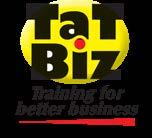

Fuel up in May, June or July to go in the draw to win. Spend $50 or more using your Capricorn Fuel Card and automatically go in the draw for that month’s prize. Unlimited entries and a prize to be won each month for purchases between 1 May and 31 July 2024.


DON’T HAVE A CAPRICORN FUEL CARD? Log in to myCAP and apply through the Capricorn Fuel Card page
5 Differences To Find
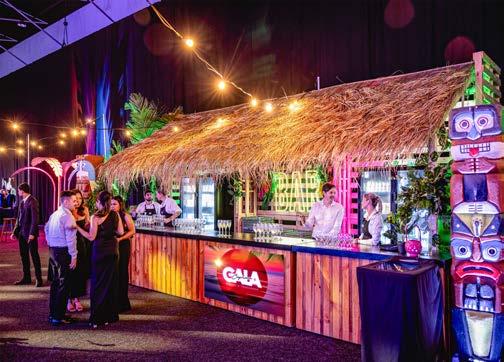


Submit your entry at cap.coop/funzone by 31 JULY 2024.
May Winner: CRAIG WIGGINS 5,000 BONUS REWARDS POINTS
Please note that this competition and participation in the Capricorn Rewards program are subject to terms and conditions. For the full Terms and Conditions, visit cap.coop/tc.
LAST MONTH’S ANSWERS
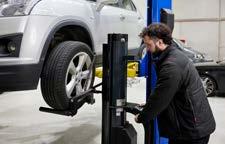
Find the 15 words hidden in the jumble. They could be horizontal, vertical, diagonal or backwards. See if you can find them all!
BENEFICIAL
CELEBRATION
CLASSIC
FUNDAMENTALS
FUTURE
GROWTH
KNOWLEDGE
MEMORIES
MILESTONES MISSION MOTIVATION POWER
PROMISING SPECIAL SUCCESSFUL

